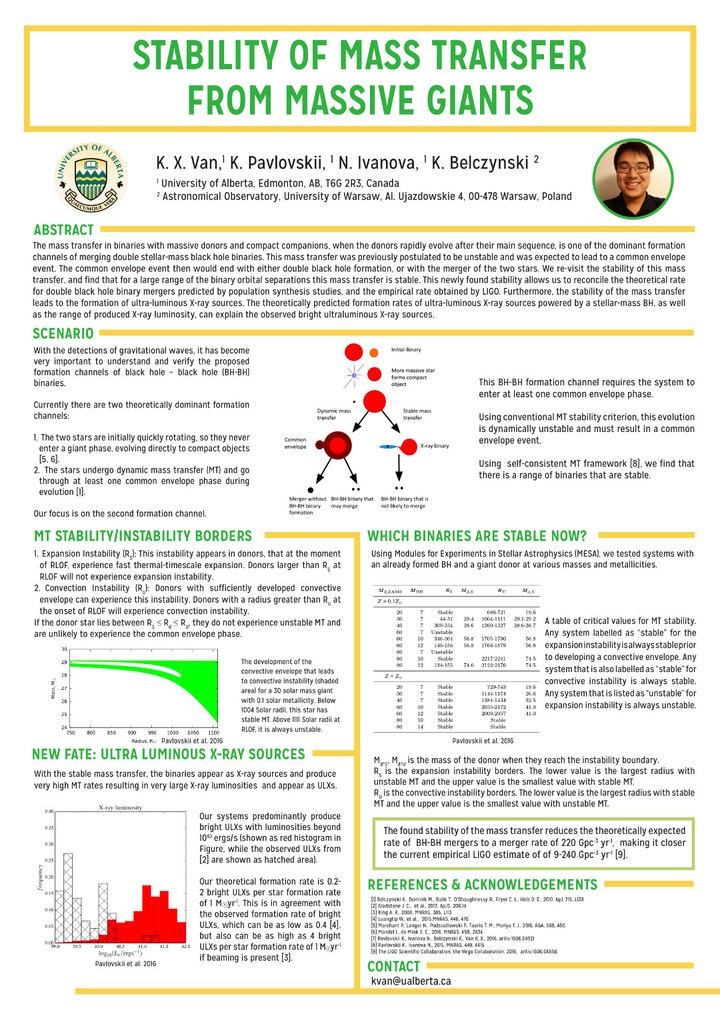Stability of Mass Transfer From Massive Giants

Abstract
The mass transfer in binaries with massive donors and compact companions, when the donors rapidly evolve after their main sequence, is one of the dominant formation channels of merging double stellar-mass black hole binaries. This mass transfer was previously postulated to be unstable and was expected to lead to a common envelope event. The common envelope event then would end with either double black hole formation, or with the merger of the two sts. We re-visit the stability of this mass transfer, and find that for a large range of the binary orbital separations this mass transfer is stable. This newly found stability allows us to reconcile the theoretical rate for double black hole binary mergers predicted by population synthesis studies, and the empirical rate obtained by LIGO. Furthermore, the stability of the mass transfer leads to the formation of ultra-luminous X-ray sources. The theoretically predicted formation rates of ultra-luminous X-ray sources powered by a stellar-mass BH, as well as the range of produced X-ray luminosity, can explain the observed bright ultraluminous X-ray sources.